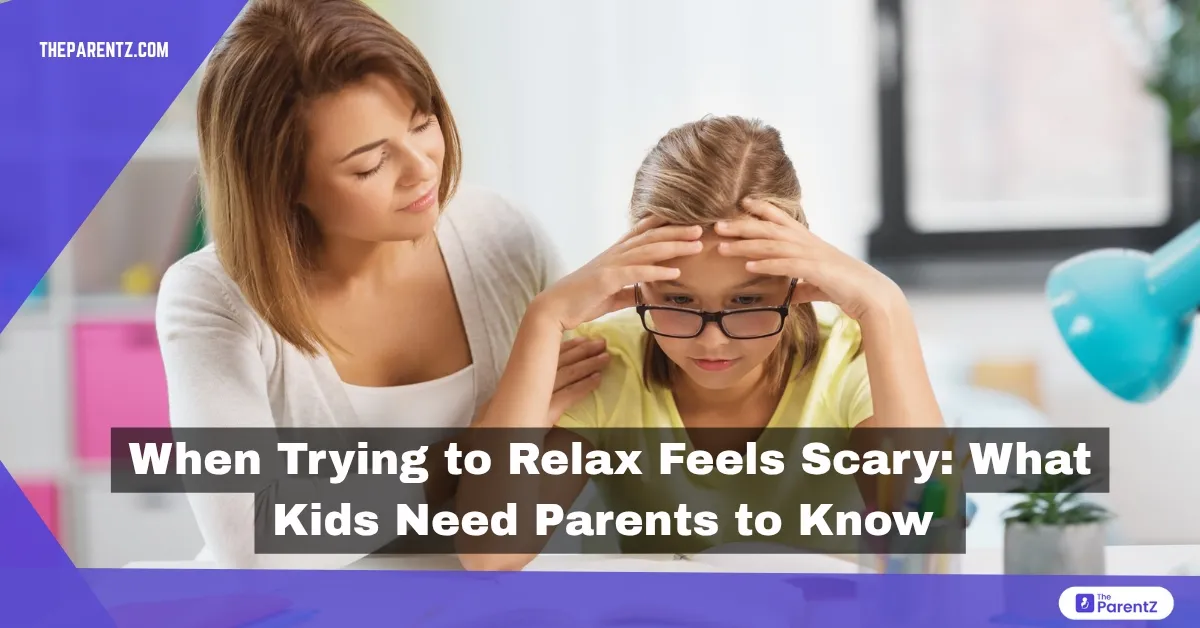If you’ve ever told your child to “just relax” when they’re feeling anxious, only to see them get more upset, you’re not alone. You might feel confused or even helpless, wondering why something as simple as relaxing seems so hard for them. Here’s the thing: for some kids, trying to relax can actually make their anxiety worse.
This might sound strange at first, but it’s real. It’s called relaxation-induced anxiety (RIA), and it happens when the very act of trying to calm down feels scary or overwhelming. If your child has ever said, “I don’t want to sit still,” or “I feel worse when I try to relax,” this blog is for you. Let’s talk about why this happens and what you can do to help.
Why Relaxing Can Feel Scary
Most people think relaxation is supposed to be the cure for anxiety. Take a deep breath, close your eyes, and let the stress melt away—sounds nice, right? But for kids with anxiety, it’s not that simple.
Here’s why: when kids are anxious, their minds are often racing with worries. It’s like their brains are running on a hamster wheel that won’t stop. For some kids, that constant worrying feels like a way to stay in control—like if they stop worrying, something bad might happen. So, when they try to relax and let go of those thoughts, it can actually make them feel less safe.
On top of that, relaxation often makes kids focus inward—on their breathing, their body, or their thoughts. For kids with anxiety, this can backfire because it makes them hyper-aware of every little sensation or worry they’re already feeling. Instead of calming down, they end up spiraling deeper into their anxiety.
Why Common Relaxation Tips Don’t Always Work
As parents, we want to help our kids feel better. So we suggest things like drawing, taking a bubble bath, coloring in a zen book, or watching something soothing like glitter in a jar. These ideas come from a good place—they work for many people—but they don’t always help kids with anxiety.
Why? Because these activities give anxious kids too much mental space to keep worrying. If their hands are busy but their minds are free to wander, those anxious thoughts will fill the empty space like weeds growing in a garden. Instead of feeling calm, they might start thinking about everything that’s bothering them—and feel even worse.
For example:
- Watching glitter settle might just remind them how “stuck” they feel inside.
- Going on a quiet walk might leave them alone with their thoughts.
- Coloring might give their hands something to do but not enough distraction for their minds.
It’s not that these activities are bad—they just don’t work for everyone. And for some kids, they can even make things harder.
What Kids Really Need When They’re Anxious
If relaxing feels scary for your child, the solution isn’t forcing them to sit still or “calm down.” What they need is something that actively engages their mind—something that pulls them out of the hamster wheel of worry and gives their brain a new job to focus on.
Here are some ideas that might actually help:
1. Do Something That Makes Their Brain Work
- Puzzles and Games: Crossword puzzles, Sudoku, word searches—anything that challenges their brain can help shift their focus away from anxiety.
- Writing: Encourage them to write lists (favorite songs, dream vacations) or even silly stories. It doesn’t have to be perfect—it just needs to keep their mind busy.
- Math Problems: Believe it or not, solving math problems can be calming because it requires focus and logic.
2. Watch or Read Something That Captures Their Attention
The key here is engrossing. A gripping book or an exciting TV show can pull them out of their worries and into another world for a while.
3. Play an Interactive Game or Sport
Games that require focus—like board games or team sports—can be great distractions. They force your child to concentrate on the task at hand instead of getting lost in anxious thoughts.
4. Use Grounding Exercises During Panic Attacks
When anxiety feels overwhelming in the moment, grounding exercises can help bring your child back to the present:
- Ask them to name five things they see around them.
- Have them list all the colors in the room.
- Challenge them to count how many times the letter “A” appears in a block of text.
- These activities give their brain something simple and structured to do.
How You Can Support Your Child
1. Validate Their Feelings
If your child says relaxing makes them feel worse, believe them. Let them know it’s okay and normal for some people to feel this way—it doesn’t mean there’s anything wrong with them.
2. Shift the Focus from “Relaxing” to “Engaging”
Instead of saying, “Let’s calm down,” try saying something like, “Let’s do something fun/challenging together.” This takes the pressure off relaxation and reframes it as an activity.
3. Be Patient and Experiment Together
Every child is different—what works for one might not work for another. Try different activities together until you find what helps your child feel better.
4. Teach Them It’s Okay Not to Feel Okay All the Time
Sometimes, anxiety won’t go away right away—and that’s okay! Help your child learn that they can still function and find joy even when they’re feeling anxious.
Conclusion
Watching your child struggle with anxiety is heartbreaking—you just want to take away their pain and make everything better. But remember: you don’t have to have all the answers right away. What matters most is being there for your child and letting them know they’re not alone in how they feel.
Relaxation isn’t one-size-fits-all—and that’s okay too! By understanding what works (and what doesn’t) for your child, you’re giving them tools they can use not just now but for life.









Be the first one to comment on this story.